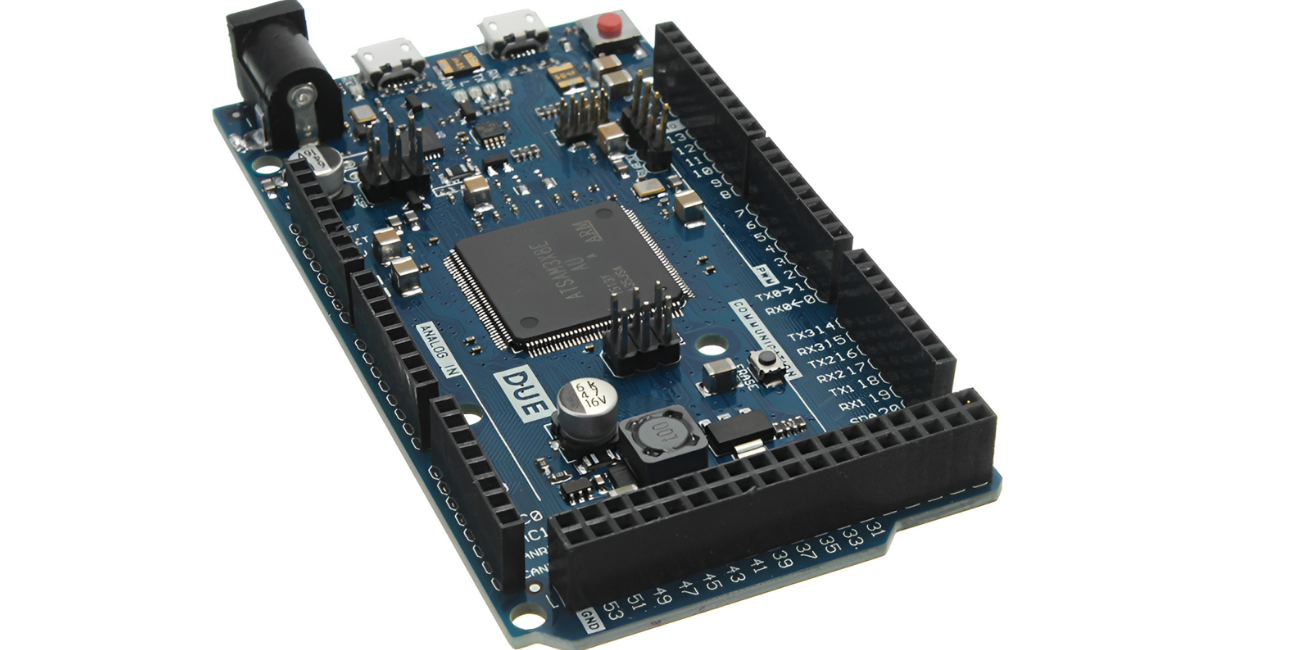The Arduino ecosystem has long been a favorite for hobbyists, makers, and professionals alike, offering a user-friendly platform for bringing creative projects to life. While the classic Arduino Uno and Nano boards have served admirably for countless applications, there are projects that demand more processing power, memory, and connectivity. This is where the Arduino Due R3, a powerful board based on the Atmel SAM3X8E ARM Cortex-M3 microcontroller, steps into the spotlight. This blog post will delve into the features, capabilities, and potential of the Arduino Due R3, highlighting why it's a compelling choice for advanced projects.
Beyond the Basics: The Due's Superior Specifications
The Arduino Due R3 represents a significant leap in performance compared to its AVR-based counterparts. Its 32-bit ARM Cortex-M3 processor clocked at 84MHz provides a substantial boost in processing power, enabling the Due to handle complex calculations, real-time signal processing, and demanding control tasks with ease.
Here's a glimpse at what sets the Due apart:
- Powerful Microcontroller: The heart of the Due is the Atmel SAM3X8E ARM Cortex-M3, offering superior processing capabilities compared to the AVR microcontrollers found in other Arduino boards.
- Ample Memory: With 512KB of Flash memory and 96KB of SRAM, the Due provides ample space for larger and more complex programs, accommodating data-intensive applications.
- Enhanced Connectivity: The Due boasts a rich set of peripherals, including USB, UARTs, SPI, I2C, and more, facilitating communication with a wide range of devices and sensors. It also offers 12 analog inputs with 12-bit resolution, providing greater precision for sensor readings.
- True DAC Output: Unlike AVR-based Arduinos that use PWM for analog output, the Due features two true analog outputs (DACs), allowing for precise and smooth analog signal generation.
- Operating Voltage: The Due operates at 3.3V, a crucial difference from the 5V operating voltage of many other Arduino boards. This requires careful consideration when interfacing with other components.
Key Features and Benefits:
- High-Speed Processing: The 84MHz clock speed enables the Due to handle complex tasks and algorithms efficiently, making it suitable for applications requiring real-time performance.
- Increased Memory: The generous Flash and SRAM allow you to develop larger and more feature-rich programs without worrying about memory constraints.
- Versatile Connectivity: The wide range of communication interfaces makes it easy to connect the Due to various sensors, actuators, and other devices.
- High-Resolution Analog Inputs: The 12-bit analog inputs provide greater accuracy for sensor readings, enabling more precise data acquisition.
- Precise Analog Outputs: The true DAC outputs allow for accurate and smooth generation of analog signals, crucial for applications like audio processing and motor control.
Applications of the Arduino Due R3:
The Arduino Due's robust capabilities make it suitable for a wide array of projects, including:
- Robotics: The Due's processing power and connectivity make it ideal for controlling complex robotic systems.
- Signal Processing: Its high-speed processing and true DAC outputs are well-suited for audio processing, filtering, and other signal manipulation tasks.
- Industrial Automation: The Due's reliability and connectivity make it suitable for industrial control and automation applications.
- 3D Printing: The Due can be used as a powerful controller for 3D printers, enabling precise control of motors and other components.
- Data Acquisition: The high-resolution analog inputs make the Due an excellent choice for data logging and acquisition systems.
Getting Started with the Due:
Like other Arduino boards, the Due is programmed using the Arduino IDE. However, due to its ARM architecture, you'll need to install the appropriate board definitions for the Due in the IDE. A simple internet search for "Arduino Due board definition" will provide the necessary instructions. Connecting the Due is typically done via the included USB cable.
Important Considerations:
- 3.3V Logic: Remember that the Due operates at 3.3V. Connecting 5V devices directly can damage the board. Level shifters are recommended for interfacing with 5V components.
- Power Supply: Ensure you use a reliable power supply that can provide sufficient current for the Due and any connected peripherals.
Conclusion:
The Arduino Due R3 is a powerful and versatile platform that opens up new possibilities for advanced Arduino projects. Its ARM Cortex-M3 processor, ample memory, and rich set of peripherals make it a compelling choice for applications requiring high performance and connectivity. While it requires some additional setup compared to simpler Arduino boards, the benefits in terms of processing power and capabilities make it well worth the effort. If you're looking to take your Arduino projects to the next level, the Due is definitely worth exploring. With the included USB cable, getting started is easier than ever. Unleash the power of ARM and bring your most ambitious ideas to life with the Arduino Due R3.

